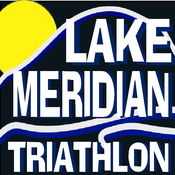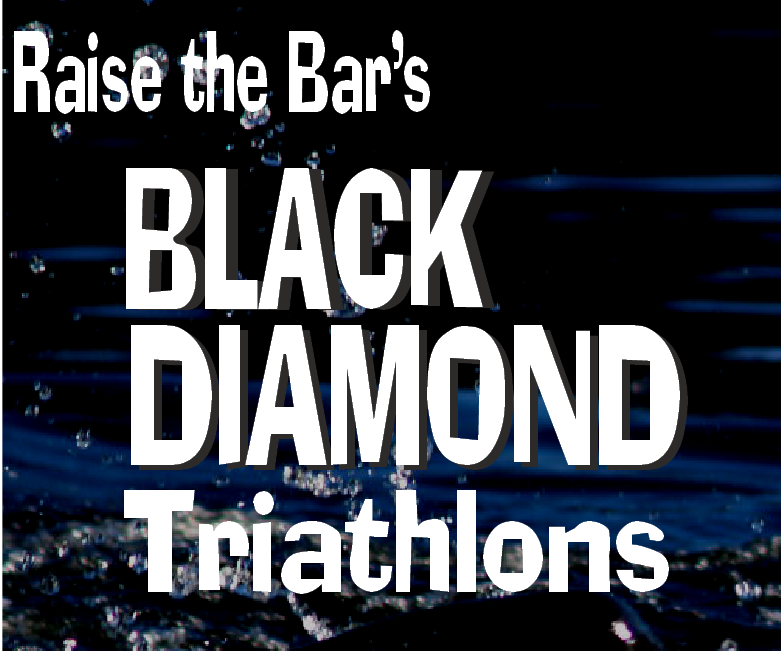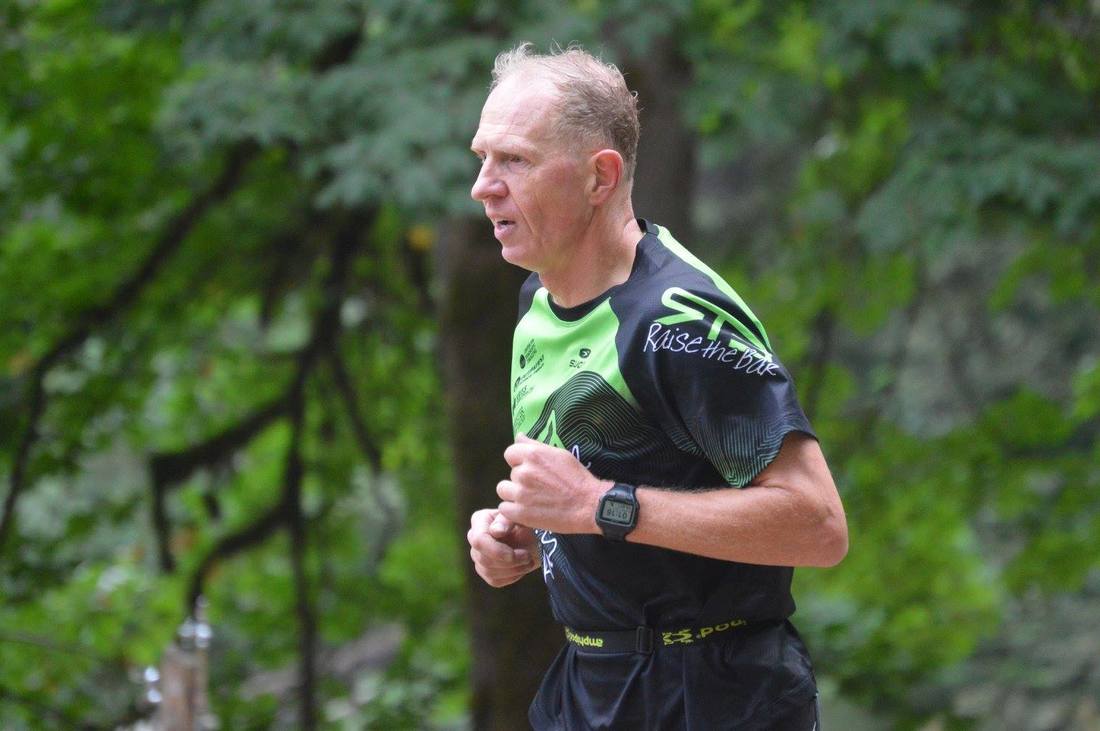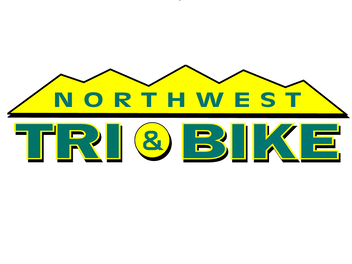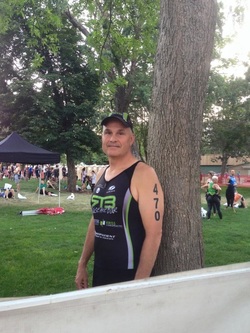 Fresh as a daisy... pre-race Fresh as a daisy... pre-race I am sure most everyone has heard about the challenges of this triathlon due to record high temperatures. The CDA June all time high was 102F, in 1927. Going into the race some forecasts were showing 108F as the projected high 24 hours out from the race start. I understand the official high was 102F and apparently we were at the cool spot in the region with Spokane reporting 105F and Walla Walla at 113F. There were unofficial reports of temperatures along the lake and the run course up to 106F. It was noticeably hotter out the far end of Hwy 95 away from the lake with reported readings from 109F to 118F. The race started warm at 70F at 5 AM and quickly heated into the 90’s so everything after the swim was just sunny and hot. This was my 43rd triathlon and 3rd full Ironman. It was my slowed by nearly an hour. I completed the race in 14:25 with 37 minutes of that as downtime fixing 3 flat tires so my actual moving race time was under 14 and I was fairly satisfied with this given conditions. Going into the race, the focus was temperature management and hydration. Both in preparation and execution I have ten points of what I did well or wish I had done better regarding the heat: 1- I decided to leave the aero helmet and used my regular bike helmet. This worked well for squirting water on my head. However, once temperatures exceeded my 98.6F (or so) body temperature, there was no noticeable air venting relief without cold water on my head. I still suspect my brain would have boiled if I had used my aero helmet and face shield. 2- I opted to wear bike sleeves. Historically I prefer to take a moment to put them for longer races for comfort on the aerobars. For this race I was questioning the wisdom of this. I opted for a lighter weight set (that happen to match the RTB kit colors too!). This turned out to be good move as I could squirt water on them and they were particularly effective when wet for cooling. 3- At 100F+ everything dries out quickly on the bike. At each aid station I took two waters; one to spray on uniform, sleeves, and head for cooling. The other to drink and mix with my liquid only bike nutrition slurry. 4- By 10 AM, any downhill bike movement provided no relief from the heat. Rather it became more like a blower dryer set on high directly in my face. I had to continually to remind myself to keep my mouth closed as it dried out very quickly otherwise and the hydration challenge became even greater. I suspect there is some additional friction heating that occurs under these conditions. I noticed that liquid in my aero bottle and cage bottles got quite warm. Water from aid stations was hot in 10-15 minutes in the cages. I noticed that when I put a bottle in the tri kit back pocket, not only did it give a little cooling on my back, the water also stayed cooler longer. I am rethinking of putting the rear seat bottle rack back on my bike. 5- My special needs water bottles were frozen solid at the drop. The bike bottle was slushy and still cold when I picked it up. The running bottle was hotter than me so I had to dump it and get water from the course. I wonder if a dry ice wrap would have kept it frozen longer. 6- I was lathered and slathered at T1 and T2 with sunblock. I had some minor sunburn on lats area of my back but overall I was well protected by the great volunteers that have what I think is a fairly yucky job. 7- On the run course it was all about ice, ice, ice! They had it at every aid station except one. I generally don’t like to run with a hat but started training with one this tri season as excess heat seemed to be the seasonal theme. At each aid station I put ice in the hat. This was incredibly effective for cooling. 8- I also took an old nylon stocking and filled it with ice to tie around my neck. Between the hat and this I never felt excessively overheated. 9- I don’t like to get wet on the run beyond normal body sweat (and for me that is still a lot). I had a contingency plan to get sprayed and even scoped out locations I could go into the lake if I was became really overheated. I never felt too hot so I avoided the hoses on the course but some zealous community members thought they knew better for me. Despite my best efforts I ended up with wet shoes. I changed into my dry socks at special needs. That could have been a mistake as the wet socks might have been “lubricating”. After changing I developed a substantial blister on my left foot. Also, the Vaseline I had put in a baggie was liquid in the heat and worthless. I later found some in solid form at the final turnaround but it was too late. 10- By mile 15 on the run I was starting to display some light heat exhaustion symptoms whenever I was running so it became a long walk finish. It was tempting to push on and persevere but I didn’t want to be among the numerous that were DNF’s and required medical attention with transport off the course. I had pleasant chats during the last 3 hours of the event with several other participants. The last fellow from Texas I walked with from miles 22 to 25 decided to run in the last mile. I saw him pass out and get carted away beyond the finish line so the risk was real even for the last mile. I enjoyed the celebration and cheering in RTB teammates instead; and then had a burger and beer J. All considered, this was a successful Ironman for me. I like to think I managed to take in a good balance of water, nutrition and electrolytes. I had no cramping or lack of energy. Perhaps I could have used more salt but I didn’t want to overload my system with sodium either. I am really hoping I paid my dues as this will be my toughest Ironman conditions this year and I get back to a more pleasant environments at Lake Tahoe and Arizona and once again thinking about the ambitious goal of sub 12:30. Comments are closed.
|
Raise the BarRace reports, upcoming events, news, and more, from RTB. Archives
September 2023
|
 RSS Feed
RSS Feed
